Perpendicular Bisector of a Chord - Definition, Examples, Quiz, FAQ, Trivia
Discover how lines and circles work together in this fascinating geometry concept!
What is a Chord?
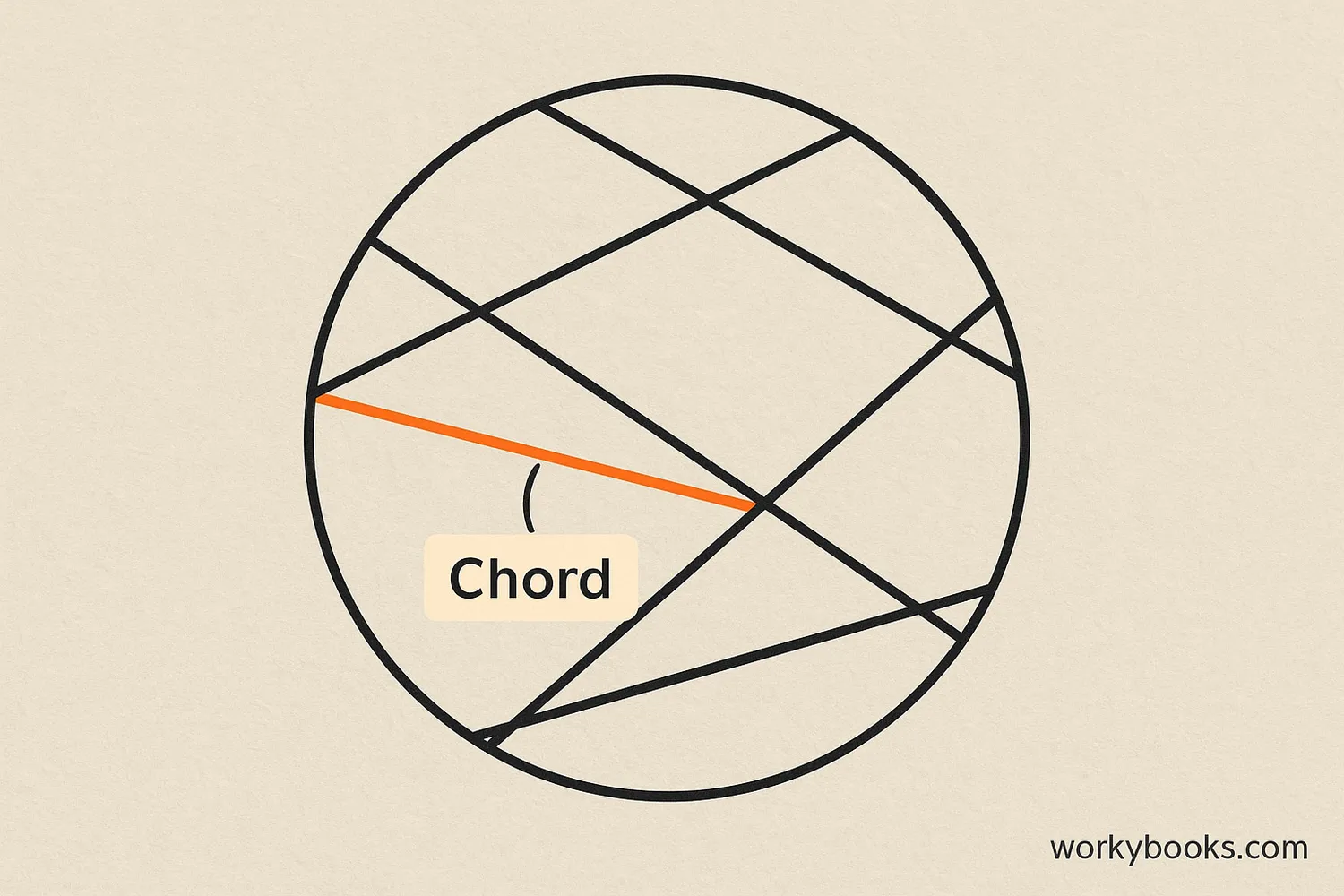
In geometry, a chord is a straight line segment whose both endpoints lie on a circle. Think of it like a straight line that connects two points on a circle's edge.
The longest possible chord in any circle is called the diameter, which passes through the center of the circle. All other chords are shorter than the diameter.
Math Fact!
The word "chord" comes from the Latin word "chorda" which means "string" - like the string of a bow!
What is a Perpendicular Bisector?
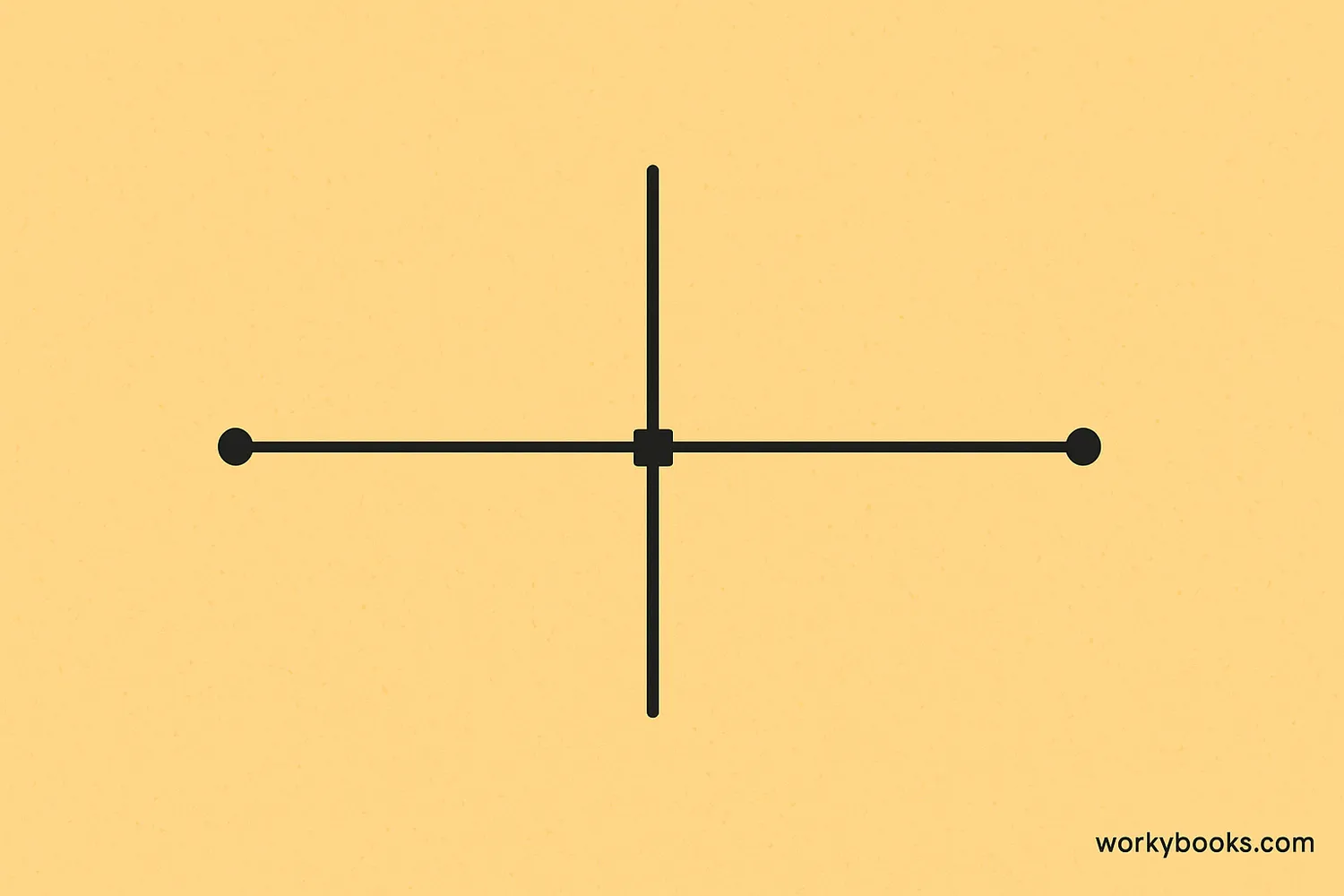
A perpendicular bisector is a line that divides another line into two equal parts at a 90-degree angle. Let's break that down:
Bisector
It cuts something into two equal parts
Perpendicular
It forms a perfect right angle (90 degrees)
Together
It cuts a line in half at a perfect right angle
Every line segment has exactly one perpendicular bisector. This is a special property that makes perpendicular bisectors very important in geometry.
The Perpendicular Bisector of a Chord Theorem
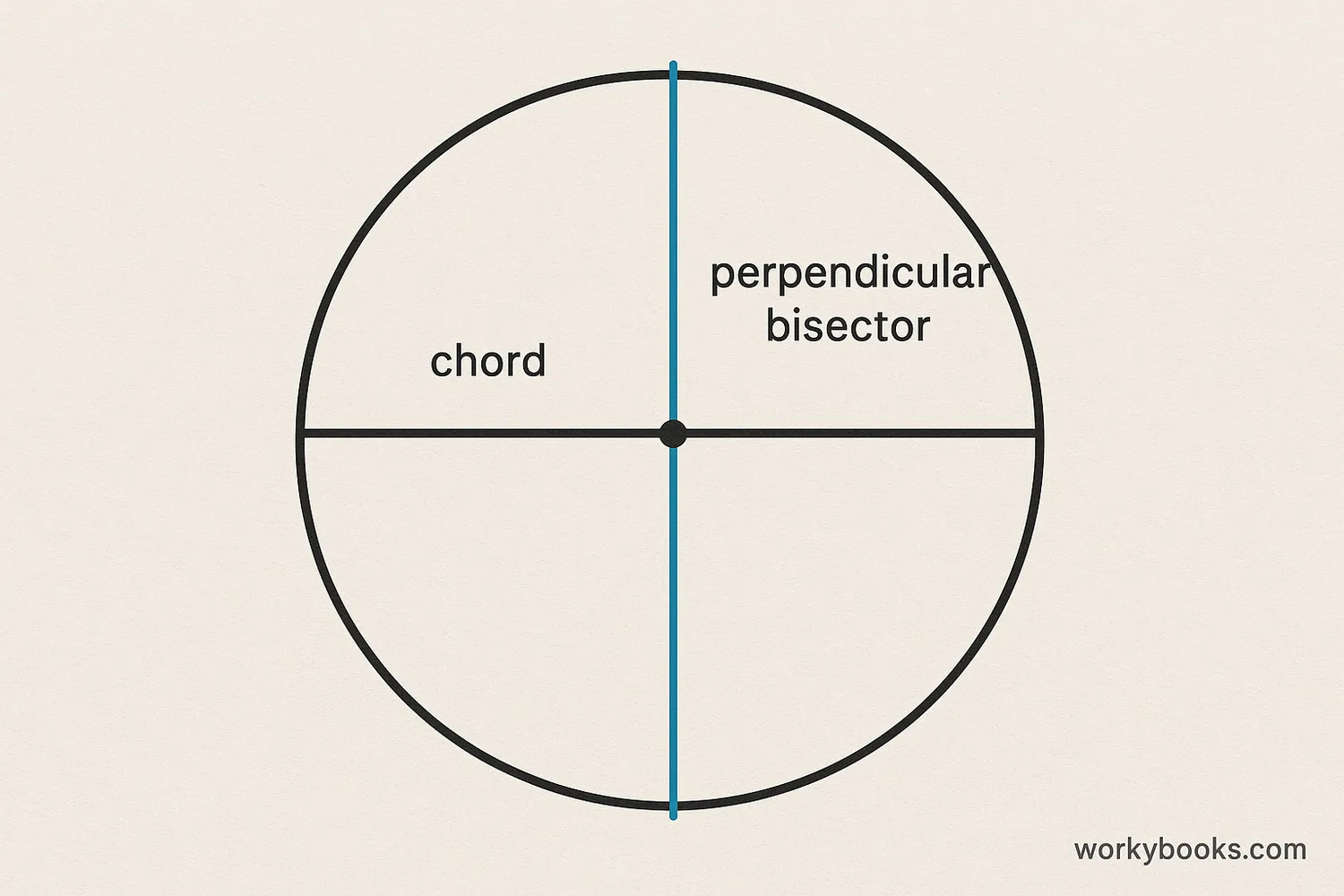
Now for the important theorem! The Perpendicular Bisector of a Chord Theorem states:
Theorem
The perpendicular bisector of any chord of a circle always passes through the center of the circle.
This means that if you draw a chord in a circle, and then draw a line that cuts that chord exactly in half at a right angle, that line will always go through the very center of the circle.
This is a special property that only circles have! No other shape has this property for all its chords.
Why This Matters
This theorem helps us find the center of any circle, which is very useful in geometry and real-world applications!
Simple Proof of the Theorem
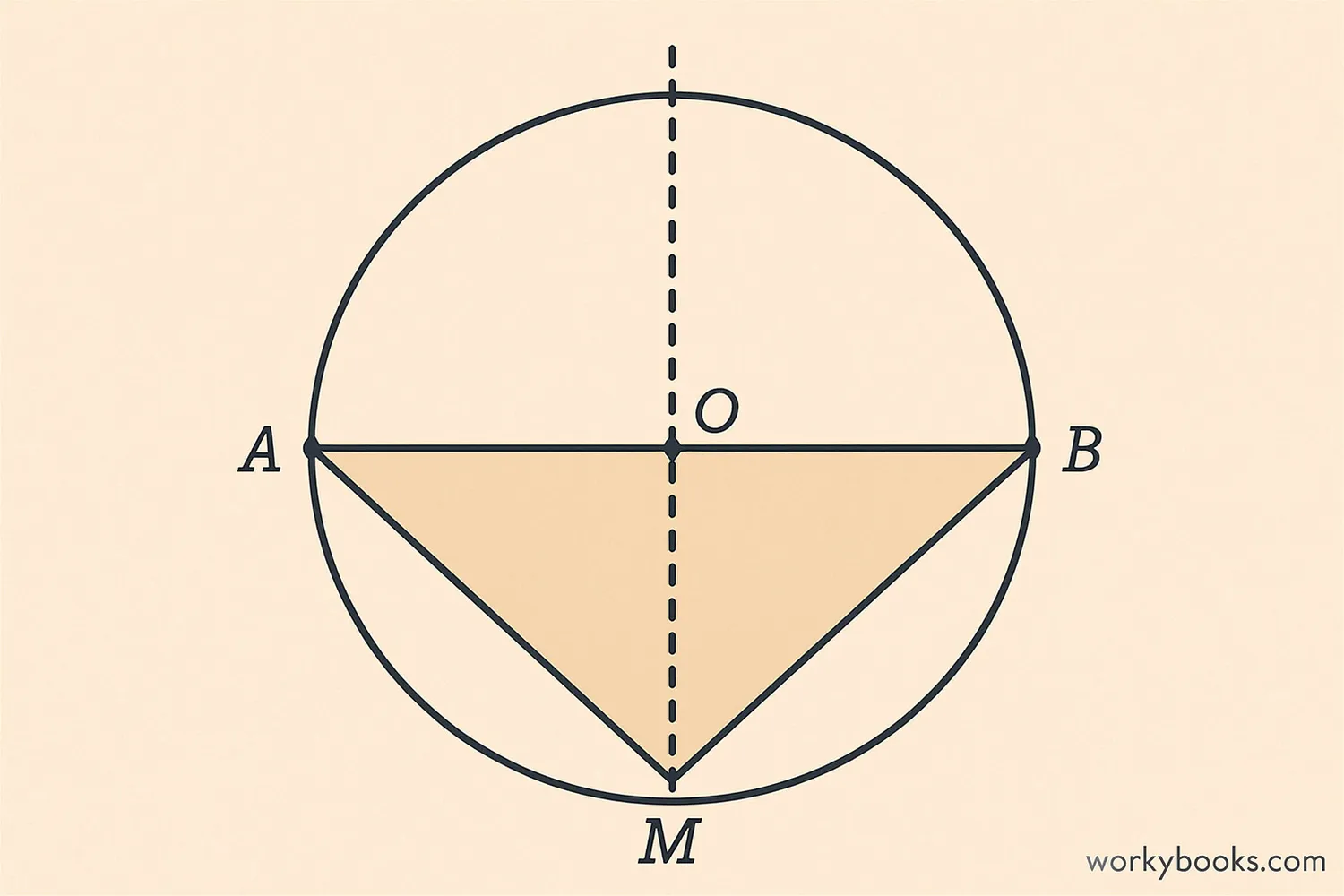
Let's look at a simple way to understand why this theorem is true. We'll use some basic geometry:
This shows that the line from the center to the midpoint of any chord is always perpendicular to that chord. That's the proof!
Examples of the Theorem
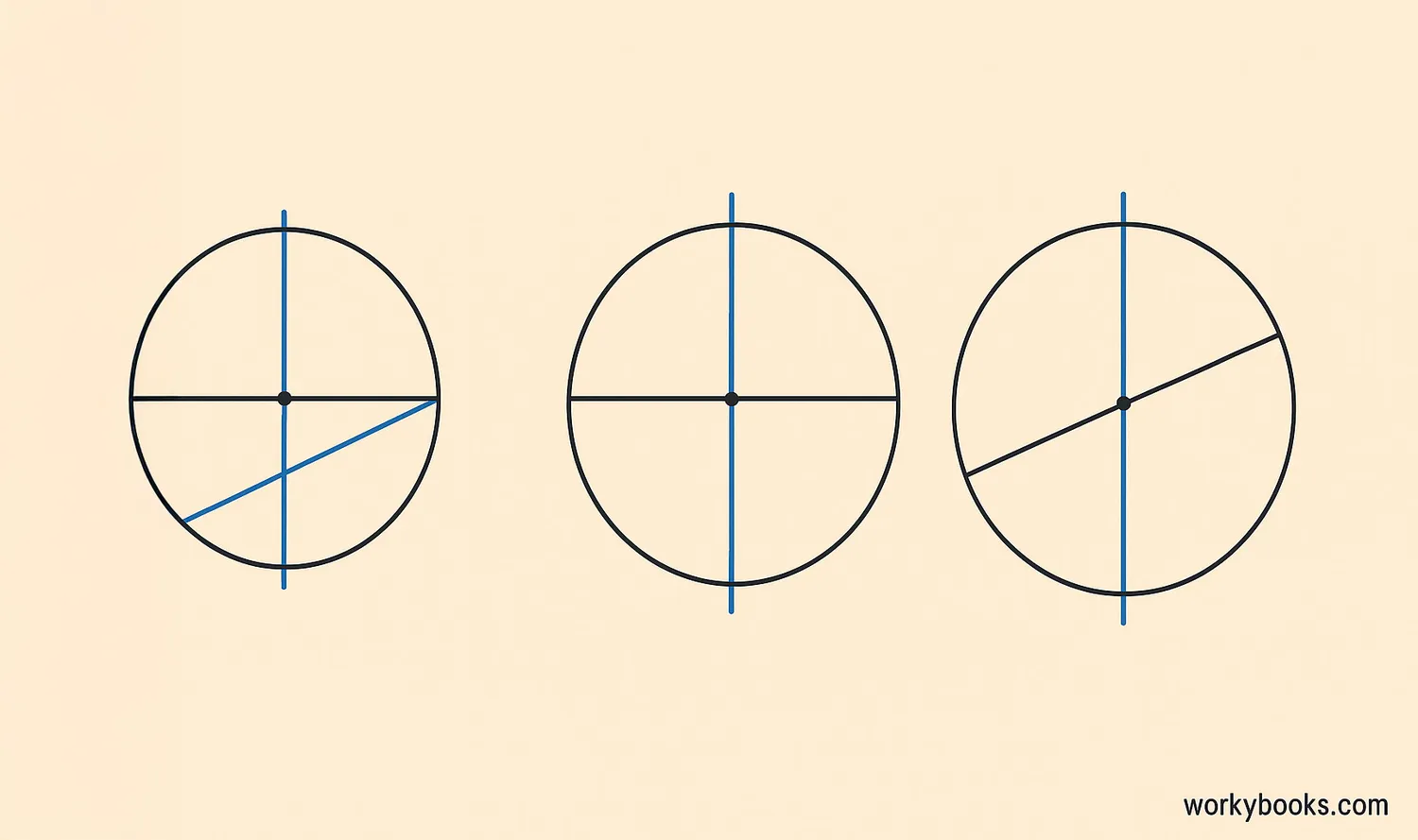
Let's look at some examples to understand how this theorem works in different situations:
Equal Chords
Chords that are equal in length are equidistant from the center of the circle.
Longest Chord
The diameter is the longest chord, and its perpendicular bisector is any line through the center.
Finding the Center
To find a circle's center, draw two chords and their perpendicular bisectors. Where they cross is the center!
This theorem is very useful for solving geometry problems involving circles. Architects and engineers use this principle when designing circular structures!
Geometry Quiz
Test your knowledge with this quiz! Answer all 5 questions to see how much you've learned.
Frequently Asked Questions
Here are answers to some common questions about the perpendicular bisector of a chord:
Math Trivia
Discover some interesting facts about circles and geometry!
Ancient Discovery
The study of circles dates back to ancient civilizations. The Babylonians and Egyptians were using circle geometry over 4,000 years ago!
Magical Pi
The ratio of a circle's circumference to its diameter (π) is approximately 3.14159, but it's an irrational number with infinite digits that never repeat!
Circles in Nature
Circles appear everywhere in nature - from the cross-section of trees to ripples in water. Even planets and stars are spherical due to gravity!
Practical Applications
The perpendicular bisector of a chord theorem is used in GPS technology, astronomy, and even in creating computer graphics!


